Sign up for Gardening Club
Join us as we share our experience with this winter wellbeing calendar along with other gardening tips and inspiration. Sign up for free.

Gardening and time in nature can support our health and wellbeing in so many ways. We can make use of the benefits of gardens and nature all year round - even in winter!
We have created a four week journey of winter wellbeing activities. These include a mix of practical, passive, active and creative activities. Some can be done indoors, others outdoors. Most need little to no equipment. You can take part if you have a huge garden or no garden at all.
You could begin at the start of the month, or on any day. If you miss out some activities, that's also ok. By the end, you will have hopefully increased your time with nature and feel the benefits!
During the shorter daylight hours of winter it’s important that we take care of our mental & physical wellbeing. Activities such as those outlined in Thrive’s winter wellbeing calendar are the tonic that lifts our mind & body by engaging with nature.
David Domoney, Thrive ambassador & TV gardener
Join us as we share our experience with this winter wellbeing calendar along with other gardening tips and inspiration. Sign up for free.
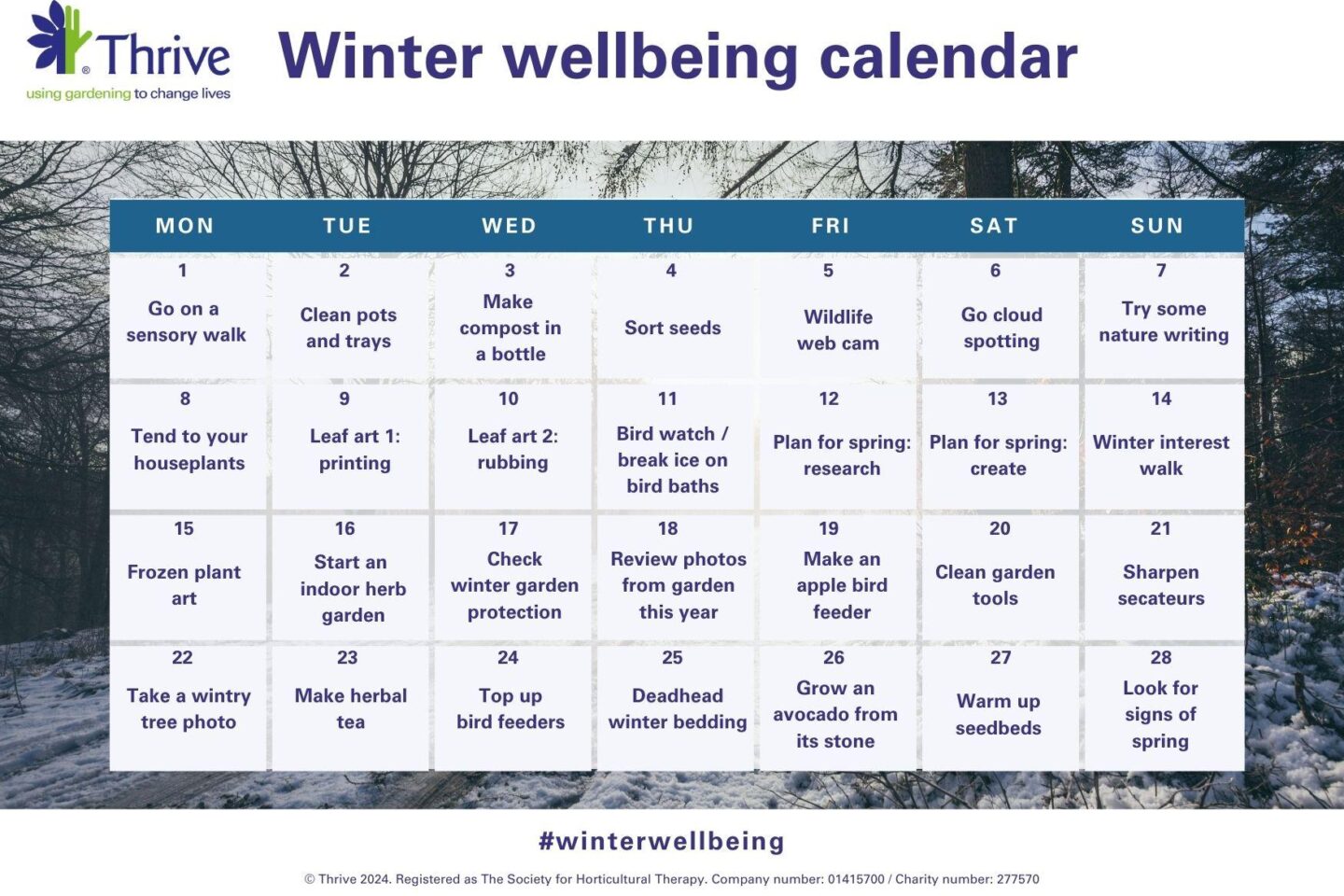
It’s simple to take part! You can either:
Find extra information to help you take part in each activity below. We know on some days and for people with some conditions, getting out in winter can be tricky. We have highlighted all the activities that can be done indoors.
You can view a gallery of photos as people join in! Browse the winter wellbeing gallery here.
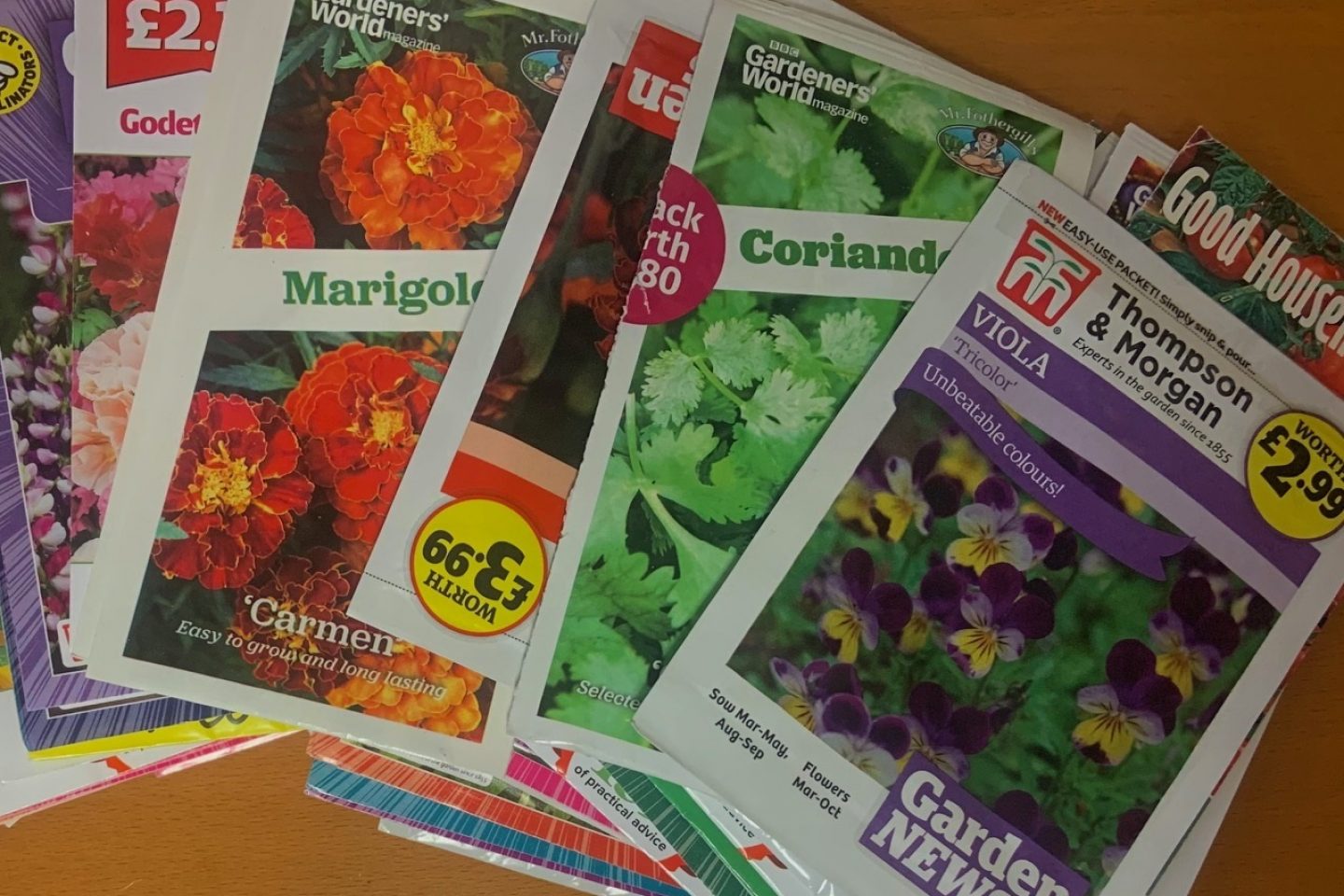
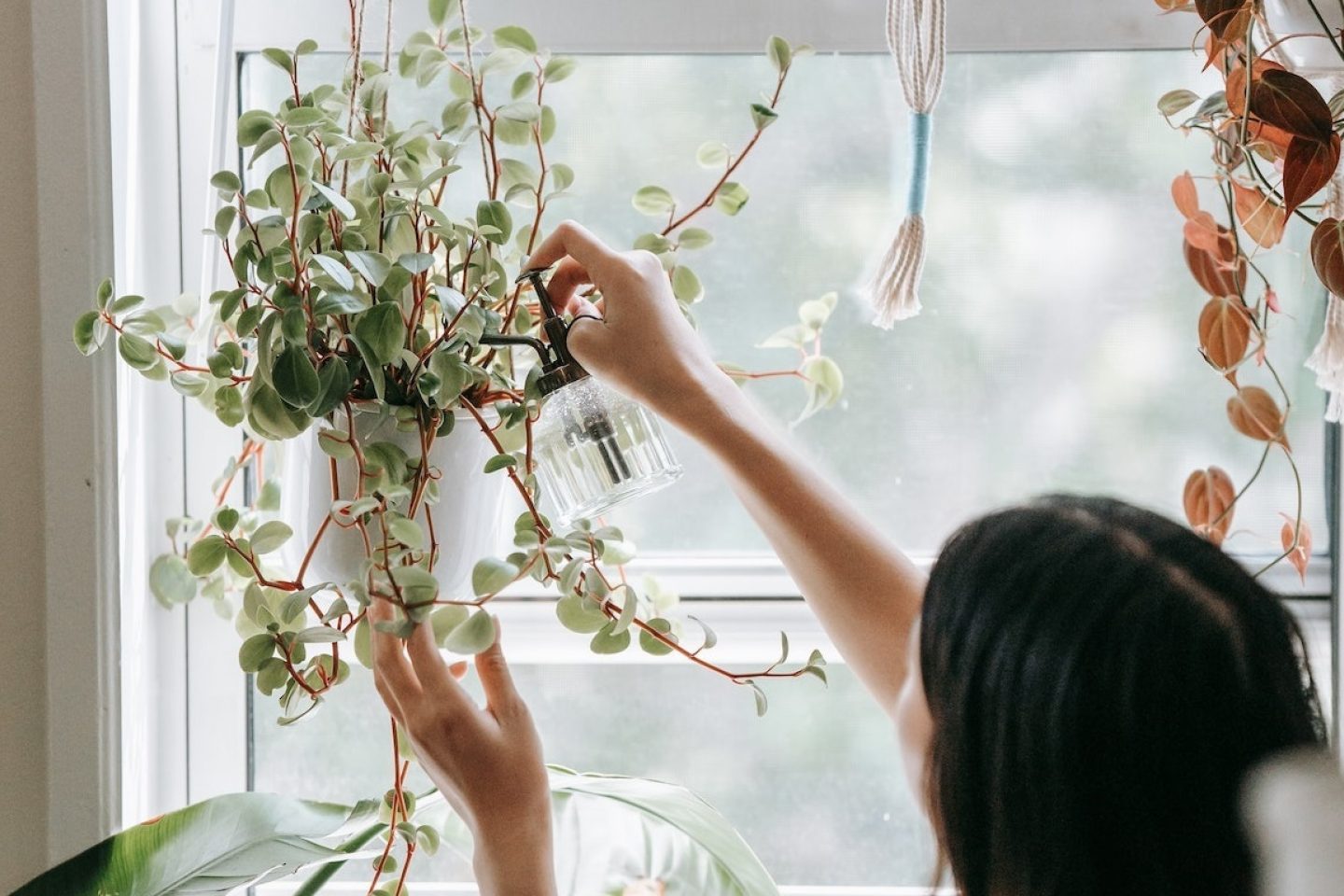
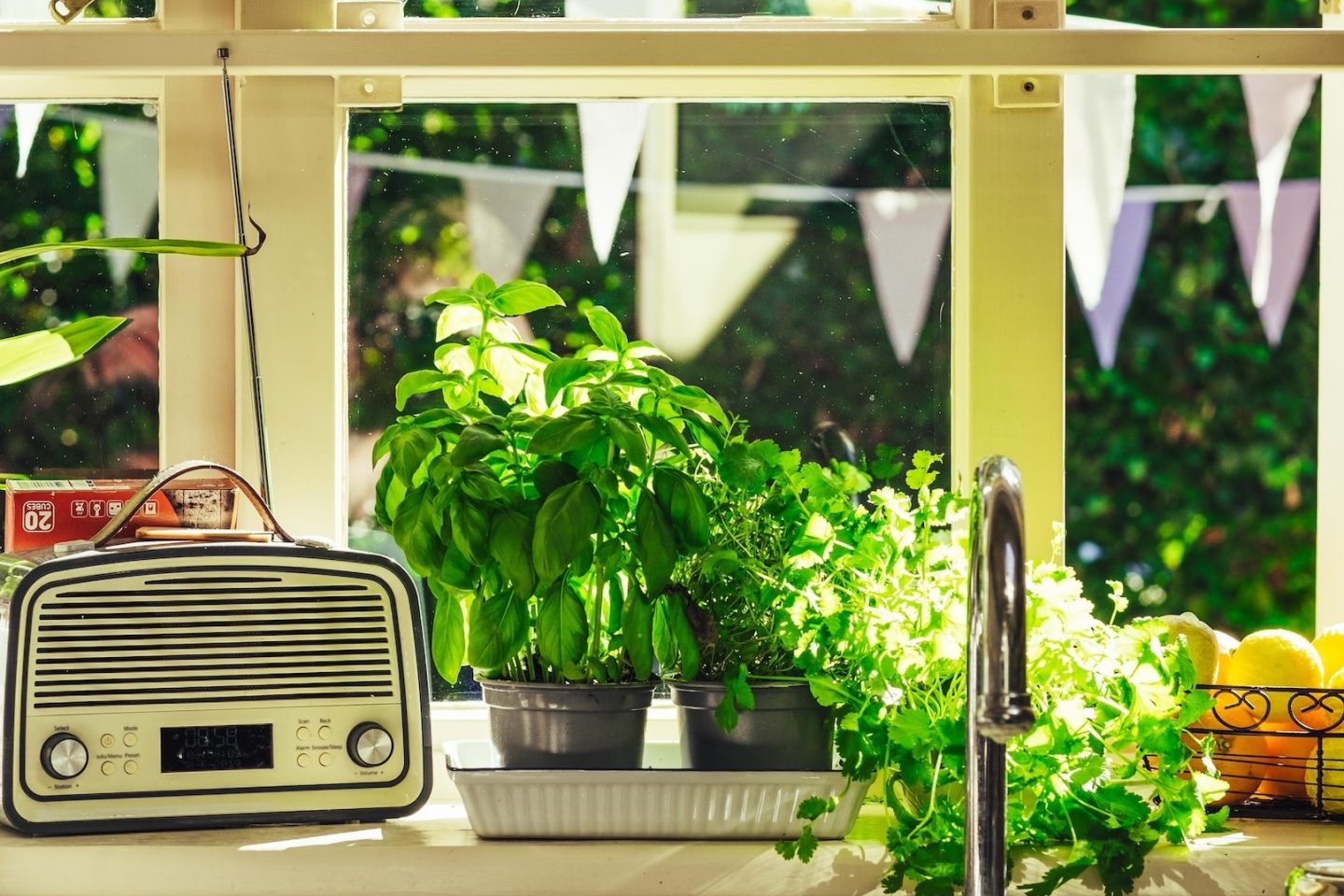
* Lead image credit: Sid Balachandran @ Unsplash
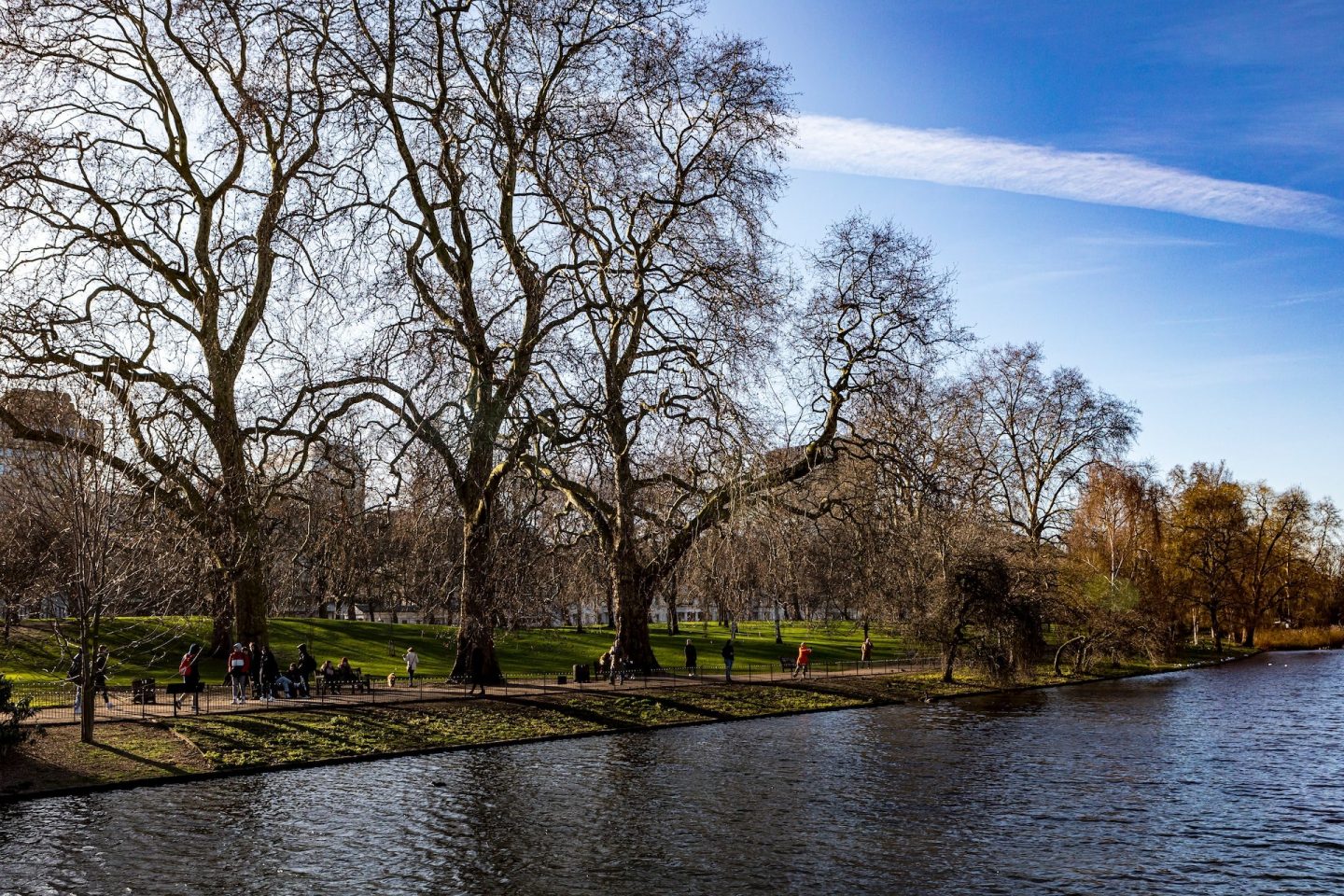
Have you tried any of the activities in the calendar? Which ones make you feel good? We'd love to hear from you. You can tag us on Facebook, Twitter or Instagram or email us at info@thrive.org.uk.
Do you know others who might enjoy this wellbeing calendar? Please do share this page and help us spread the wellbeing benefits further.
Do you need more urgent support for your mental health and wellbeing? Please access the NHS mental health resources or contact your GP.